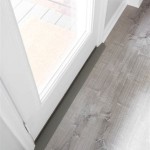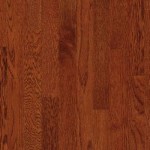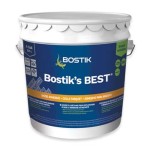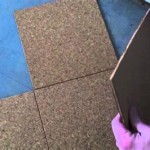Finding Reliable Vinyl Flooring Repair Near You
Vinyl flooring, a popular choice for both residential and commercial spaces, offers durability, water resistance, and aesthetic appeal. However, despite its robust nature, vinyl flooring can sustain damage from various sources, including heavy foot traffic, furniture movement, dropped objects, and moisture exposure. When damage occurs, prompt and effective repair is essential to maintain the floor's integrity and prevent further deterioration. This article serves as a comprehensive guide to identifying qualified vinyl flooring repair services in your local area and understanding the repair process.
The search for "Vinyl Flooring Repair Near Me" often begins out of necessity. A damaged vinyl floor can present a number of problems. Beyond the unsightly appearance of cracks, tears, or bubbles, damaged vinyl can become a tripping hazard, particularly for the elderly or those with mobility issues. Furthermore, compromised vinyl flooring can allow moisture to seep beneath the surface, potentially leading to mold growth and structural damage to the subfloor. Addressing vinyl flooring issues promptly is, therefore, crucial for safety, aesthetics, and the long-term health of the building.
Identifying Types of Vinyl Flooring Damage
Before initiating a search for local repair services, it's important to understand the type and extent of the damage. This knowledge will enable you to communicate effectively with potential contractors and receive accurate estimates. Common types of vinyl flooring damage include:
Scratches and Scuffs: These are superficial marks that typically affect the surface layer of the vinyl. They are often caused by pets, furniture dragged across the floor, or abrasive cleaning products. Minor scratches can sometimes be addressed with DIY solutions, such as using a vinyl repair kit or applying a specialized scratch remover. However, deeper scratches may require professional intervention.
Tears and Cuts: Tears and cuts can result from sharp objects being dropped on the floor or from mishandling during furniture moving. These types of damage are more severe than scratches and can compromise the structural integrity of the vinyl. Repairing tears and cuts often involves patching the damaged area or replacing the affected section.
Bubbles and Warping: Bubbles and warping occur when the vinyl flooring separates from the subfloor. This can be caused by moisture exposure, improper installation, or adhesive failure. Bubbles not only detract from the floor's appearance but also create a tripping hazard. Addressing bubbles and warping typically involves re-adhering the vinyl to the subfloor or replacing the affected area.
Fading and Discoloration: Prolonged exposure to sunlight or harsh chemicals can cause vinyl flooring to fade or discolor over time. While fading may not directly affect the structural integrity of the floor, it can diminish its aesthetic appeal. In some cases, professional cleaning or sealing can help restore the original color. However, severe fading may necessitate replacement.
Loose or Peeling Seams: Over time, the seams between vinyl flooring sheets or tiles can become loose or start to peel. This can be caused by improper installation, inadequate adhesive, or moisture exposure. Loose seams can allow dirt and debris to accumulate, creating an unsanitary environment. Repairing loose seams typically involves re-adhering the affected areas.
Determining the cause of the damage can also be helpful in preventing future occurrences. For example, if moisture is the cause of bubbling, you may need to address the underlying plumbing issue or improve ventilation in the room.
Finding Local Vinyl Flooring Repair Services
Once you have a clear understanding of the damage, the next step is to locate qualified vinyl flooring repair services in your vicinity. Several avenues can be explored to find reputable contractors:
Online Search Engines: Utilizing online search engines, such as Google, Bing, or DuckDuckGo, is a primary method for finding local businesses. Typing in the keywords "Vinyl Flooring Repair Near Me" will generate a list of local contractors, along with their contact information, customer reviews, and website links. It is crucial to examine the search results critically, paying attention to the contractor's reputation and experience.
Online Directories and Review Sites: Websites such as Yelp, Angie's List, HomeAdvisor, and Better Business Bureau (BBB) provide directories of local service providers and allow customers to leave reviews and ratings. These platforms can offer valuable insights into the quality of workmanship, customer service, and pricing of different contractors. Look for contractors with consistently positive reviews and a good track record.
Local Hardware Stores and Flooring Retailers: Many local hardware stores and flooring retailers offer installation and repair services or can recommend reputable contractors in the area. These businesses often have established relationships with local professionals and can provide reliable referrals. Visiting a local store also allows you to see samples of vinyl flooring and discuss your repair needs in person.
Referrals from Friends, Family, and Neighbors: Word-of-mouth referrals can be a valuable source of information. Ask friends, family members, and neighbors if they have any experience with local vinyl flooring repair contractors. Personal recommendations can provide a level of trust and assurance that online reviews may not always offer.
Social Media Platforms: Local community groups on social media platforms like Facebook can be a good place to ask for recommendations for vinyl flooring repair services. Members of these groups are often willing to share their experiences and provide helpful advice.
While searching, focus on companies that specialize in flooring or have a dedicated team for flooring repairs. General contractors may be able to handle the repair, but flooring specialists often have more experience and expertise in dealing with vinyl flooring.
Evaluating Potential Contractors
After compiling a list of potential contractors, it's essential to evaluate their qualifications and experience. This involves verifying credentials, checking references, and obtaining multiple estimates. A thorough evaluation process will help you choose a contractor who can provide high-quality repairs at a fair price.
Licensing and Insurance: Ensure that the contractor is properly licensed and insured. Licensing requirements vary by state and locality, but a valid license demonstrates that the contractor meets certain professional standards. Insurance, including liability and worker's compensation, protects you from financial responsibility in case of accidents or damages during the repair process. Ask for proof of licensing and insurance before hiring a contractor.
Experience and Expertise: Inquire about the contractor's experience in repairing vinyl flooring. How many years have they been in business? What types of vinyl flooring repairs have they handled? A contractor with extensive experience is more likely to have the skills and knowledge necessary to address your specific repair needs. Ask for examples of previous work or references from satisfied customers.
References and Reviews: Contact the references provided by the contractor and ask about their experience working with them. Were they satisfied with the quality of the work? Was the project completed on time and within budget? Were there any issues that arose, and how were they resolved? Read online reviews carefully, paying attention to both positive and negative feedback. Look for patterns of consistent praise or complaints.
Estimates and Contracts: Obtain written estimates from multiple contractors before making a decision. Compare the estimates carefully, paying attention to the scope of work, materials used, and labor costs. Be wary of unusually low estimates, as they may indicate substandard workmanship or hidden fees. Ensure that the estimate includes a detailed breakdown of all costs and a timeline for completion. Once you have chosen a contractor, sign a written contract that outlines the scope of work, payment terms, and warranty information. The contract should protect both parties and provide a clear understanding of the project requirements.
Warranty: Ask about the warranty provided on the repair work. A reputable contractor will stand behind their work and offer a warranty against defects in materials and workmanship. The warranty should specify the duration of coverage and the process for filing a claim.
Communication and Professionalism: Assess the contractor's communication skills and professionalism. Are they responsive to your inquiries? Do they explain the repair process clearly and answer your questions thoroughly? Do they arrive on time for appointments and treat your property with respect? A contractor who is communicative and professional is more likely to provide a positive customer experience.
By carefully evaluating potential contractors based on these criteria, you can minimize the risk of hiring a unqualified or unreliable service provider.
Understanding the Vinyl Flooring Repair Process
The vinyl flooring repair process varies depending on the type and extent of the damage. However, some general steps are typically involved:
Assessment: The contractor will assess the damage to determine the best course of action. This may involve inspecting the flooring, subfloor, and surrounding areas. The contractor will also identify the cause of the damage to prevent future occurrences.
Preparation: The area around the damage will be prepared for repair. This may involve cleaning the surface, removing loose debris, and masking off adjacent areas to protect them from damage.
Repair: The repair method will depend on the type of damage. For scratches, a vinyl repair kit or scratch remover may be used. For tears and cuts, a patch may be applied or the affected section may be replaced. For bubbles and warping, the vinyl may be re-adhered to the subfloor or the affected area may be replaced. For loose seams, the seams may be re-adhered.
Finishing: Once the repair is complete, the area will be finished to blend seamlessly with the surrounding flooring. This may involve sanding, polishing, or applying a sealant. The contractor will also clean up the work area and remove any debris.
During the repair process, the contractor should take steps to minimize disruption to your household. This may involve using drop cloths to protect furniture and flooring, ventilating the area to remove fumes, and cleaning up any mess promptly.
In some cases, complete replacement of the vinyl flooring may be a more cost-effective or practical solution than repair, particularly if the damage is extensive or the flooring is old and worn. The contractor can advise you on the best course of action based on your specific circumstances.
By understanding the vinyl flooring repair process, you can better communicate with the contractor and ensure that the work is completed to your satisfaction.

Avoid Costly Mistakes Repairing Vinyl Plank Flooring Made Easy

Professional Vinyl Flooring Repair Installation Mr Handyman

How To Repair Luxury Vinyl Plank Flooring The Palette Muse

Floor Repair Small Damages On All Surfaces Surface Experts
Kennesaw Hardwood Floor Refinishing Repair Mr

Top 10 Best Floor Repair Near Loganville Ga 30052 Updated 2025 Yelp

Quick 20 Vinyl Floor Tile Repair Kit By Liquid Leather

Liquid Leather Multi Colored Vinyl Floor And Tile Repair Kit 1 00 X

Tile Vinyl Floor Services Mr Handyman

Liquid Leather Vinyl Floor Tile Repair Kit Jl Ryan
Related Posts








